Why Consistency is a Myth and How The Golf Score Code is the Truth for Your Success in Golf28/5/2013
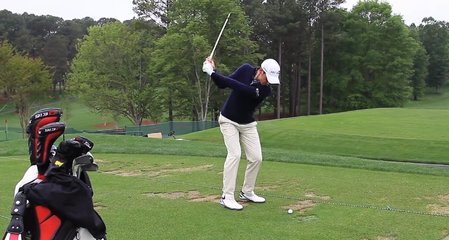 In our last lesson we discussed how important it is to lower your high score average to be successful in amateur and professional golf. It is a common misconception in golf to believe that you can be consistent at golf scoring. You can have a score average that would give the impression that you are consistent at golf, but your competitive score average - your B game is always a product of your A, and C game scores. Top level professional golfers will have a score variance of at least 10 shots from their best scores to their worst over a season, and in elite amateur golf it can be as much as 20 shots and sometimes more. The most successful professional golfers are really good at keeping the high scores off their score card. In contrast, go to any advanced amateur event and you will always find a percentage of the field that has really high scores that are not nearly consistent with their stated handicap. In fact is not unusual to see golfers with 1 and 2 handicaps scoring in the mid 80’s or higher in some tournaments. Now this doesn't make a lot of sense, but it is a reality of amateur golf. The reason is that their golf handicap is not a true reflection of their golfing ability, because if they were to submit every golf score they had in amateur golf tournaments, for many amateur golfers they would have a much higher handicap than is stated. Why do they do this? Well, for a variety of reasons but one of the most likely is simple peer pressure. They want to feel like they’re part of the low handicap crowd and as such they put their best cards in to get handicapped and keep their bad one’s out. So they create a false impression of their golfing ability because they basically only submit their A and B scores and eliminate the C and D scores. D scores are the really bad scores. Now you will never become a successful amateur or professional golfer with an attitude like that.  You have to accept the bad days with the good ones and learn how to lower the bad score days and make them better ones. That is the real skill of an elite golfer. Even the great professional golfers have higher scores than they want to at times. Take Adam Scott for instance. In 2012 have a look at his first 30 rounds of the PGA Tour season (excluding the Accenture Matchplay and Tavistock Cup). Notice how little consistency there is from one round to another against the par of the courses he played. You’ll notice in the example below that the only thing that is consistent is the par of the course he plays each day, and for the 30 rounds he played the par averaged out at 71.00. What’s interesting though is that Adam Scott’s score average (B Game) averaged out at 71.03. He missed just one cut in the 30 competitive rounds but earned US $1,135,899.22 dollars for the period. His highest score against par was a 76 against the par of 70 (+6) in the U.S. Open, however this is not surprising to see higher scores posted in the U.S. Open as the USGA sets the golf courses up so they are really tough, consequently the scoring averages of all the professionals competing in this event are higher than normal. The other high score was 77 (+5) in the Memorial Tournament, where with a closing 77 and 74 he finished the event in a tie for 46th place. So the key to understanding this variability in score is that your C Game scores are balanced with your A Game scores. Think of it like a see-saw, with high score sitting on one side and low score sitting on the other, and when high score goes up, low score must push it back down below B Game average. That is how the game is played.  Also called a teeter-totter Also called a teeter-totter This is the only real consistency you can strive to create in competitive golf; when you have high scores you must have the ability to produce a low score to attain your B Game average. Your attitude to achieving this goal is the most important trait you can develop to become a professional golfer. Drive your C Game scores down and it affects your B Game average. And you can’t have a low B Game average without the ability to have a good A Game. The Golf Performance Model Every golf score you produce is a product of a whole range of variables that effect your performance from day to day. It is futile to attempt to produce consistent scores when you consider the factors that will influence the score that you produce. You can see in the model below that from day to day your A, B and C game score is being influenced by some of the following:
Not to mention the degree of difficulty of some golf tournament layouts you play. This is why it is difficult to achieve a linear style scoring consistency. It’s not going to happen, so focus more on developing your golf scoring skills and ability to have the flexibility to bounce back from C Game scores with A Game scores by playing the par 3’s, 4’s and 5’s better. Par is the Standard Your golf scores are a product of how well you play the par 3’s, par 4’s and par 5’s, so it makes sense that you understand how effective your scoring average is playing these holes. Here is a quick quiz: What is you scoring average on par 3's, 4’s and 5’s for this season? Do you know? Which of the par zones affect your C Game score the most? How about you’re A Game? When your score in the A Game zone which holes do you tend to play the best? Do you produce more birdies on the par 5’s or the par 4's? These are important questions when determining how you will improve your scoring ability. You should now understand that just practicing your golf skills in a random and haphazard way is not the approach to take if your goal is to play successfully on a professional golf tour one day. In-fact, it is much easier to extract the improvement from your game that you are looking for when you target the par zones first. Determine which of the par zones is your weakest and then work out what you need to do to improve your zone average with the help of your golf coach / instructor. In the example below Brandt Snedeker had a par 3 average of 3.01; a par 4 average of 4.02, and a par 5 average of 4.59 for 78 rounds of golf on the PGA Tour in 2012. From these simple statistics you can see that it is easier to understand how Brandt Snedeker played the par 3, 4 and 5 holes, and when you consider that the 78 rounds he played were played in all types of conditions, and on all types of golf course layouts, it is a fine example of how he has developed his scoring ability to produce a competitive score average for the 2012 season of 70.10 (actual). (Click on the images to make them larger) In contrast take a look at Matt Bettencourt’s results (above right) for the 2012 PGA Tour season. He played 6 rounds less than Brandt Snedeker and his score average was 72.9 for the 72 competitive rounds he played. He scored 2.8 strokes per round higher than Brandt Snedeker’s score average of 70.10. Now you can see that the explanation is quite simple on the surface. Brandt Snedeker played the par 5’s better and kept the bogeys and worse from his card better than Matt Bettencourt. Now I know that there’s a lot more to it than this, however you have to start somewhere and determining how many pars, birdies, bogeys and worse you make on average is a great start. Too often we see advanced golfers going straight to the common statistics of greens hit, etc. when they produce C Game results without really looking at what we call the Golf Score Code.  The Golf Score Code What was your Golf Score Code for last season? Every time you play a round of golf a percentage of your round score will be made up of par’s, birdies, bogeys, double bogeys and worse. Sometimes you’ll even have an eagle or better. Your golf score therefore is simply a reflection of how skillful you are at producing scores equal to the par of the hole-better or worse. The number of pars, birdies etc., you produce is the substance of your score. You improve your golf skills only so that you can make more pars and birdies, and less bogeys and worse. Tiger Woods was ranked third in the category of ‘Bogey Avoidance’ on the PGA Tour in 2012 (which is calculated as the percentage of times he makes bogey or worse), and he produced only 171 bogeys or worse for the 1206 holes (14.18 %) he played on the 2012 season. When Tiger won The Players Championship in 2013 all we see on the scoreboard is the final analysis - the total score for 72 holes (- 13 275). What we don't see is his Golf Score Code. The Golf Score Code is the number of pars, birdies etc, that he produced over the tournament, which is his formula that made up his winning 72 hole total. His Golf Score Code for the week was: 11.75 - .25 - 4.5 - 1.25 - .25 The Golf Score Code What is Your Golf Score Code? In our experience elite golfers don't look at their Golf Score Code to determine the strategy required to improve their competitive score average. As I mentioned earlier they will focus on how many fairways and greens hit, and so on without determining which skills have the most influence on the number of pars, birdies etc., that they make in a golf tournament. By analyzing your Golf Score Code carefully you can make better strategic decisions regarding your golf improvement pathway. And if you want to play successfully as a top level amateur golfer, or you want to play successfully on a professional golf tour then you simply have to improve you Golf Score Code. Next week I'll share with you how to determine your strategic direction with your golf improvement and the next level beyond the Golf Score Code - The Golf Score Success Code. This is the expert golfer formula you have to know and develop to become a successful golfer - whether amateur or professional. Lawrie Montague and David Milne - Pro Tour Golf College Your Success On Tour is Our Business Comments are closed.
|
Archives
June 2019
|
Proudly Supported By
Copyright © 2011 - 2018 Pro Tour Golf College
Website Managed By Golf Performance Media
All Rights Reserved
Website Managed By Golf Performance Media
All Rights Reserved


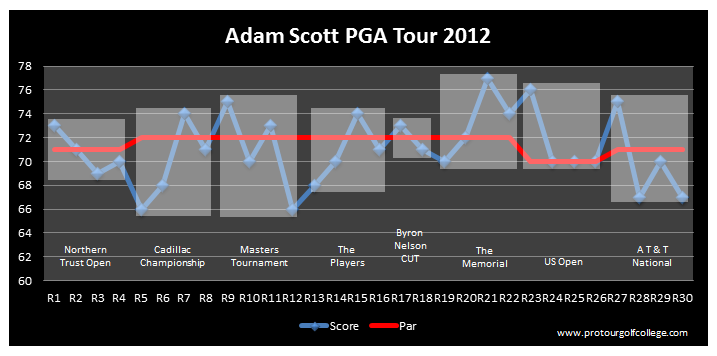

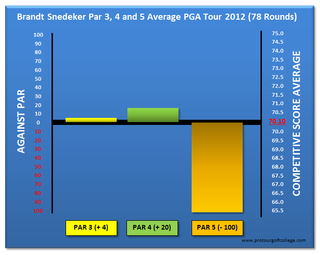
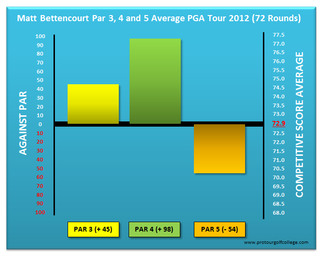
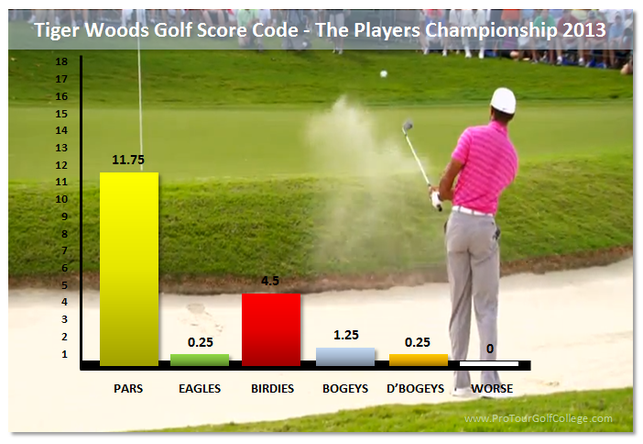


 RSS Feed
RSS Feed



